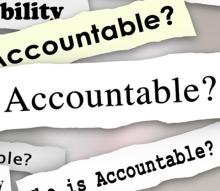
By now you have probably realized that LinkedIn can be a powerful tool during your job search, but LinkedIn is not just another social networking site – it is the professional social network. As in real-life workplace situations, judiciousness and professional courtesy should steer all of your activity on LinkedIn. You have worked hard to make and keep a good impression in your lab and/or office. The same should hold true on LinkedIn; you need to make and maintain a positive, professional appearance. A LinkedIn faux pas has the potential to damage your career path, so here are a few red lights to heed to along the way: 1. Stop using LinkedIn’s auto-generated templates. LinkedIn pre-populates most message fields; however, that doesn’t mean you should keep the generic message as your own. Whether it is requesting a connection or congratulating someone on a new job you should take the time to personalize your correspondence. Using the auto generated “I’d like to add you to my professional network on LinkedIn” misses an opportunity to tell the person why you want to connect. Make it as specific as you can; for example, “It was great sitting next to you at OITE’s Academic Job Interviews Workshop on Monday. I enjoyed chatting about your research at NCI and I’d like to stay connected.” 2. Stop indiscriminately connecting with people. The people you choose to connect with are often viewed as an extension of yourself, so make sure you know who they are and why they want to connect with you. This doesn’t necessarily mean that you can’t link in with an acquaintance or even a stranger; however, if making a request to add a cold contact, you must explain why you want to connect (which goes back to point # 1). 3. Stop clicking on things! With just a simple click of a button, you can quickly and easily endorse the skills and expertise of your connections; however, this doesn’t necessarily mean you should. An endorsement can be seen as baffling if you are endorsing an individual for something you have never witnessed them doing first-hand. An endorsement can also feel more annoying than gratifying to the recipient if this is an area that they practiced years ago. Many also wonder, “Are you secretly expecting an endorsement or recommendation in return?” In an effort to continue advertising the endorsements feature, LinkedIn frequently groups your contacts together and asks if you would like to endorse them all for skills they have on their profile in one fell swoop. Use your best judgment and think before you click. 4. Stop doing nothing. Doing too much on LinkedIn – reposting every article you read online that day or asking everybody for a recommendation – can be overwhelming to your connections and it can create a negative online impression. Equally bad is doing nothing at all. If you are job searching, this could even be worse. So, take the time to set a well-cropped, professional headshot as your profile photo (note: pictures of you on a beach, holding your cat, or with a group of friends do not set a good first impression of you as a serious professional). Update your contact information, your headline and then get out there! As with any social network, the premise is to participate, so don’t be afraid to contribute to the conversation.




